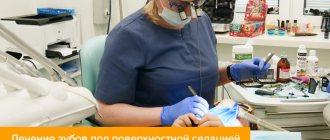Those who are familiar with severe lumbar pain or have serious problems with the spine know firsthand what a blockade is. This difficult procedure is considered today to be practically the only method of quickly relieving pain that arises in the back due to deformities or other pathologies of the vertebral arch. The blockade does not serve as a method of treatment and cannot be one. But an injection can relieve pain in a matter of minutes. What a blockade is, for what indications and how it is done, and what contraindications or complications this procedure may have is useful to know.
Blockade for lower back pain
Why blockade relieves pain
To understand the mechanism of action of the blockade, it is necessary to understand how pain occurs and how it affects.
Prices for painkillers for back pain
How pain occurs
Pathological phenomena in the spinal column are the reason why the spinal nerves become pinched. When a nerve is compressed, it transmits pain to a limb or neck, lower back, and so on. The location of pain depends directly on the location of the pinched nerve.
Pinched nerve in the lower back
Important! If the painful sensation occurs once or not often, it is relieved by a single dose of drugs that affect the source of pain. But if the symptom becomes chronic, a centralized inflamed pain focus forms in the cerebral cortex. It cannot be removed using standard treatment methods.
In cases where lower back pain becomes severe and constant, they resort to a blockade as the only way to relieve it. The injection turns off (disables) one of the links in the chain of movement of the pain reflex, which is why the entire movement of pain is interrupted, and the impulse does not reach the limbs and organs.
This procedure is not a method of treating back diseases, but only a way to relieve pain.
In some cases, a blockade injection is used for diagnostic measures to establish the true cause of pain.
Products for the treatment of injuries, muscle and joint pain
What is a blockade injection
What is this procedure? Through the injection, the nerve conduction of the fibers that transmit pain to the organs is reduced/switched off. For this purpose, local anesthetics are used, which act by inhibition to block sodium channels.
The pain syndrome goes away in almost a minute or two, and if this does not happen, a thorough diagnosis and search for other causes of pain are necessary.
For blockade, local anesthetics are used that block cell conduction by inhibiting voltage-gated sodium channels
The blockade injection is performed exclusively in the clinic, and only by doctors who have professional clearance for this procedure. A specialist needs not only medical knowledge, but also topographical and anatomical knowledge. Most often, specialists who meet the necessary requirements work in traumatology or neurosurgery in clinics and hospitals. Therefore, the procedure is carried out there.
Carrying out the blockade, photo
What is the difficulty of implementing a blockade? In the insecurity of the spinal cord. It would seem that, enclosed in a durable shell of the vertebral arch, the spinal cord remains one of the most vulnerable organs, which is afraid of the slightest penetration of bacteria. Viral infection of the spinal cord can lead to death of the patient. Therefore, the blockade is performed only under sterile conditions, where surgical operations are usually performed. The specialist wears gloves.
The procedure is carried out under sterile conditions
By the way. The procedure is reminiscent of taking puncture lumbar fluid, only during the blockade the patient is positioned differently, and the injection can be given not only in the lower back (depending on the location of the pain).
Advantages of blockade as an analgesic method
This method of relieving the patient of lower back pain has many advantages.
Safe anesthetic drugs for breastfeeding used in dentistry
In dentistry, there are two types of anesthesia:
- general (anesthesia), which is used for surgical interventions and can be inhaled or intravenous;
- local, which can be in the form of a spray (gel), the effect of which does not exceed twenty minutes, and injection.
Sprays (gels) are usually used to locally numb the area of the gum where the anesthetic will be injected.
Novocaine
This drug is used during lactation with extreme caution and only in cases where the expected benefit for the nursing mother significantly outweighs the possible risk of unpleasant consequences for the baby.
Lidocaine
Despite the warning in the instructions for the drug about the undesirability of use during lactation, dentists quite often use it in their practice. This is explained by its local and short-lived effect, as well as the minimum concentration of the active substance, both in the blood and in breast milk. That is why Lidocaine is considered relatively safe for a baby during the treatment of his mother.
Artikain
The drug is acceptable for use during lactation. At the same time, doctors note that there is no need to interrupt feedings for a long period, since critical indicators of its concentration in milk are not detected.
IMPORTANT. When breastfeeding, the use of anesthesia with a high content of adrenaline is contraindicated.
What types of blockades are divided into?
There are many types of blockades. They are classified mainly by the location of the pain. But injections have not only a direct targeted effect. For example, a blockade in the neck, in the area of vertebrae 1-7, can relieve pain from the entire back, along the entire spine.
Table. Types of blockades by area of effect.
| Variety | Scope |
| It is done in the area of the six upper vertebrae belonging to the cervical segment and the seventh transitional segment. Relieves pain in the head and neck, and throughout the spine. Eliminates pain in the hands. |
| Thoracolumbar | It relieves pain in the lower back, legs, and also relieves pain in the intestines. |
| Blocks pain in the spine responsible for the lower back. |
| Combats pain at the lumbosacral level. It is often used (like the lumbar) for diagnostic purposes. |
| Level 1-12 thoracic vertebrae is the site of a thoracic blockade, which relieves pain syndromes in the upper extremities, torso, internal organs and throughout the back. |
| The difference between this type is that the injection is placed in a branch of the nerve without affecting the entire spinal cord. In this way, half of the body or a specific organ is anesthetized. This is enough to relieve narrow-point pain syndrome or perform a diagnostic procedure. An anesthetic substance is injected into the area of the paravertebral level (transverse vertebral processes). |
Blockades are also divided into types according to the point of administration and the drugs used.
The injection can be given:
- into the soft tissues surrounding the painful area of the spine;
- into biologically active segments of the muscular and ligamentous apparatus, as well as into tendons and active skin points;
- into nerve fibers;
- into nerve plexuses and nodules.
Depending on the drug used, injections are divided into:
- therapeutic (with the administration of a treatment drug, such as steroids);
- lidocaine (pain relief);
- novocaine (pain relief, diagnostics).
Injectable medications
Compositions for blockade injections are most often multicomponent. The main elements they contain are lidocaine and novocaine. These drugs are able to interrupt the process of nerve impulse transmission by inhibiting sodium passage.
Is it possible to feed a child after dental anesthesia?
Fortunately for nursing mothers, many modern anesthetics either do not penetrate into breast milk at all, or even if they do get into it, their concentration is so minute that they do not have any harmful effect on the baby’s body and are quickly eliminated.
The main task of a woman who is breastfeeding is to inform him about her situation during a visit to the dentist and find out after what time the anesthesia chosen by him will “leave” the body.
As a rule, you can feed the baby three to five hours after applying the anesthetic. During the forced break, you should simply express milk, lightening the breasts and stimulating the production of a new portion. To prevent your baby from suffering from hunger, you should express the required amount of milk before visiting the dentist. Moreover, breastfeeding experts advise feeding the baby using a spoon or syringe (without a needle), but not through a nipple. This is necessary so that the baby does not refuse the breast, from which it is much more difficult to “extract” food than from a bottle. This recommendation is especially true for long-term treatment of the mother with antibiotics.
How to treat toothache during lactation?
Often, toothache occurs when a woman does not have the opportunity to receive qualified help as quickly as possible. In this case, you can try to alleviate the condition with the help of:
- removing food debris with a toothbrush and floss (it is quite possible that the pain was caused by a nerve irritated after contact with food);
- applying a cotton swab soaked with Dent drops to the painful area (this will help reduce pain and prevent the infection from spreading);
- thoroughly rinsing the mouth with furatsilin, chlorhexidine, hydrogen peroxide or a weak solution of potassium permanganate;
- rinsing with a teaspoon of baking soda and a pinch of salt dissolved in a glass of water (at least six times a day after meals);
- rinsing with a decoction of oak bark (a tablespoon per glass of boiling water), heated in a water bath for about 15 minutes (rinse in the morning and before bedtime);
- taking painkillers acceptable during lactation (Paracetamol, Ibuprofen).
IMPORTANT. It is permissible to use painkillers no more than three times a day and no longer than three days. Even if the pain has subsided, you should consult a dentist at the first opportunity for a preventive examination.
To prevent dental problems, especially during lactation, a woman should devote enough time to prevention:
- maintain oral hygiene (brushing your teeth with a high-quality toothpaste twice a day, and after eating, use dental floss and special rinses);
- eat fully and properly, enriching the diet with all necessary vitamins and microelements;
- limit the consumption of sweets;
- Do not eat too hot or ice-cold food.
Dental treatment during lactation is not only possible, but also necessary. Moreover, it is ideal if visits to the dentist are planned and not emergency. But even if treatment is forced to be carried out using anesthesia, this is not a reason to be upset. The main thing is to warn the doctor about your “condition” and wait the required period of time for the drug to be eliminated from the body, and then resume breastfeeding without fear.









